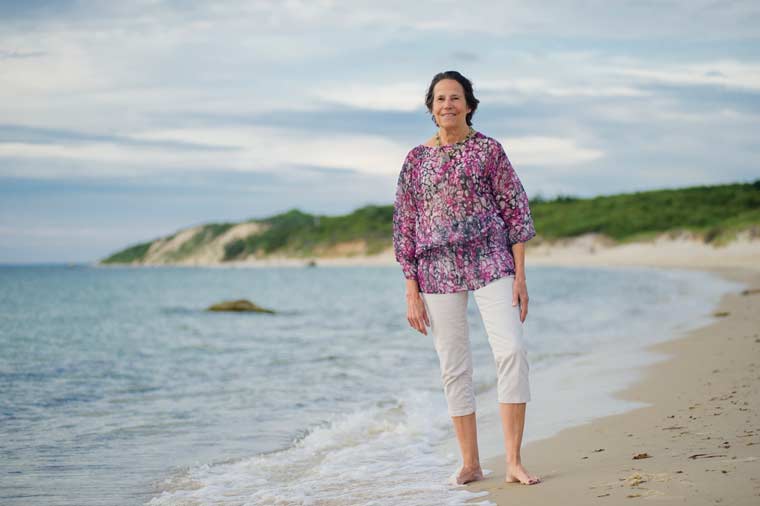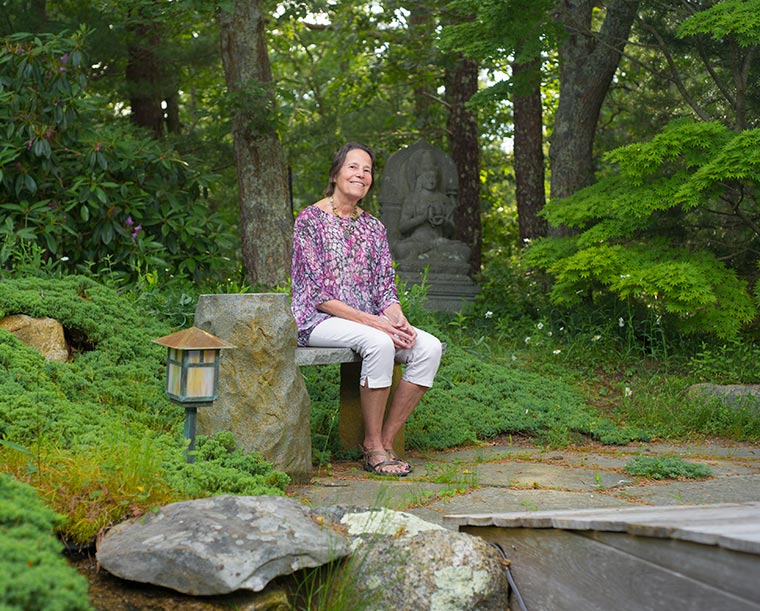There are moments in everyone’s life that alter our trajectory in a dramatic way. Often it is an experience, often an inspiring person. Juliet Hollister was just such a person.

As my mother and I sat on her porch in 1958 having tea, Juliet told us she’d had a vision of bringing the world’s religious leaders together, a startling idea at that time. Her words were like the sun breaking through a cloud, with rays scattering in every direction of my being. She was on fire with a spiritual force that infused my heart with hope. Little did I know that moment on Juliet’s porch, when I was just 14 years old, would begin my journey with the Temple of Understanding (TOU), which Juliet founded in 1960.
I also traveled to Japan as a teen on the summer program World Learning. I was enthralled by the beauty and peaceful rhythm of life imbued by Buddhist philosophy. When I returned home, however, I was shocked at a friend’s derogatory attitude toward the Japanese, a passed-down mindset still lingering long past the end of WWII. How could I explain these sensitive and caring people to my peers? This pivotal experience convinced me that personal exposure to the culture of a people—and the religion underlying that culture—is essential to truly understanding them.
"This pivotal experience convinced me that personal exposure to the culture of a people—and the religion underlying that culture—is essential to truly understanding them.”
Actively involved with TOU from age 15, I was deeply immersed in the values of cooperation and mediation by the time I became a parent. That viewpoint led to an interest in working with troubled children, so I embarked on a dual-degree program in transpersonal counseling psychotherapy and clinical child psychotherapy at John F. Kennedy University in California. My course work at Sarah Lawrence in studio art, art history, and mythology with Joseph Campbell (literature) proved to be the perfect background for my advanced studies and my later work as a play and sandplay therapist.
In graduate school, I gravitated toward the tenets of Dr. Margaret Lowenfeld, the founder of sandplay, though I also studied Jungian methods. I was fascinated by Lowenfeld’s theory that young children think in pictures, not words. Through non-verbal techniques, even very young children are able to process their traumas and share their innermost feelings. Employing sandplay with toys (images) and drawings, this approach allows young patients between 3 and 12 years old to tell stories, which helps them adjust to the difficulties in their lives.
Most people do not understand the importance, deep significance, and social impact of early intervention like this. Yet the return is many times the investment in preventing criminality, mental illness, inability to study, and the related destructive effects on the family unit. My conviction that early intervention can be life changing for both child and family prompted me to open a private practice and create a child psychotherapy component for a preschool program in the South Bronx.
Yet when my husband and I bought a house only two doors down from Juliet, it seemed to be destiny. We both joined her board of trustees and spent many hours involved in Temple of Understanding activities. A conference in Oxford, England, in 1988, at which both Mother Teresa and His Holiness the Dalai Lama were present, was a special highlight for all of us.
Many new interfaith organizations have been created since Juliet founded the Temple of Understanding, and TOU representatives have attended the openings of several, with her blessing. “There is plenty of work to go around,” she always insisted. In particular, the events of September 11, 2001, catapulted the concept of interfaith into the limelight. Suddenly, interfaith services were being held all over the country.
“Actively involved with the Temple of Understanding from age 15, I was deeply immersed in the values of cooperation and mediation. ... I became executive director [and] began moving the organization in new directions ... focusing on global youth leadership skills.”
The following year I became executive director for the TOU, phasing out my 25 years of therapy work. In this leadership role, I began to move the organization in new directions and create new activities, courses, and workshops focusing on global youth leadership skills. My early experience in Japan and my fervent belief that all young people should experience other cultures and religions guided my decisions.

For example, “A Season for Nonviolence” was an opportunity for high school teachers to bring their students to the United Nations for inspiring talks and performances about luminaries like Gandhi and the Rev. Dr. Martin Luther King Jr. Today our summer internship program offers college students firsthand experience observing the peacekeeping work of the UN, and our activities concentrate on crucial topics such as climate change and its effect on women’s issues, food sovereignty, and justice.
I hope more academic and nonprofit organizations will embrace the powerful impact of early intervention. Certainly, early influences, including Juliet’s vision, shaped me—inspiring me to aid children and empower the next generation of interfaith activists.
Written by Alison (Jackson) Van Dyk ’68
Photos by Max Bossman